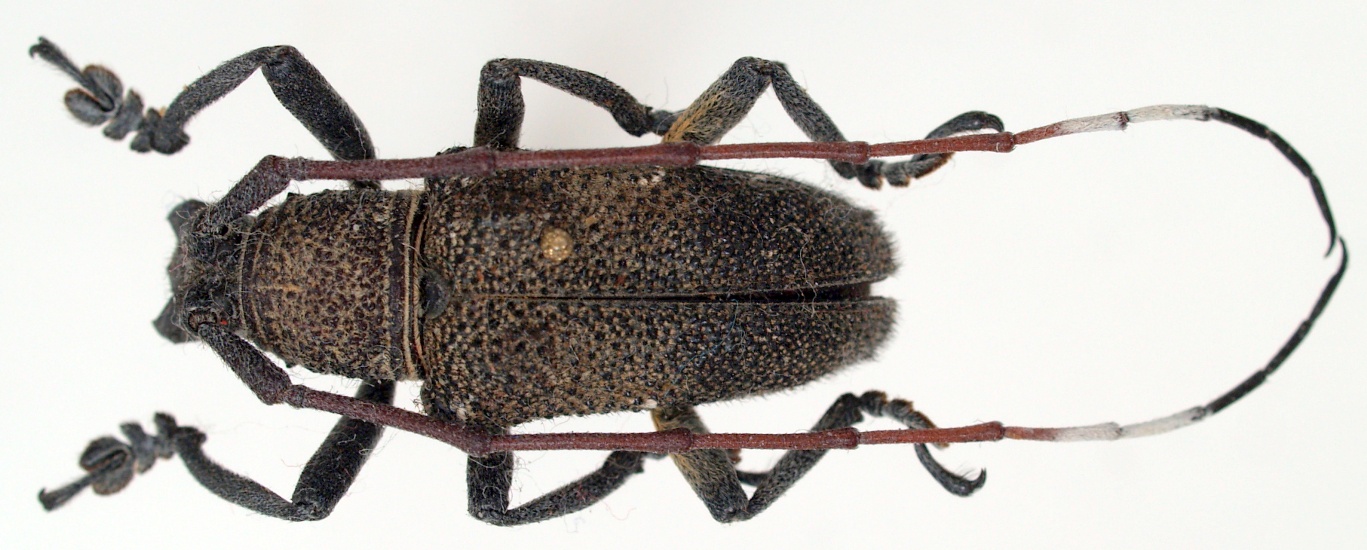| T O P I C R E V I E W |
| Gerard |
Posted - 30/01/2011 : 22:13:45

INDONESIE Ile Sulawesi Palolo
Taille 21 mm
j'espère ne pas t'avoir présenté celui ci.
Je n'ai aucune idée pour celui ci |
| 15 L A T E S T R E P L I E S (Newest First) |
| Francesco |
Posted - 09/07/2018 : 22:09:04
quote:
Originally posted by Gerard
félicitation Francesco.
Merci
Gérard, je vais t'envoyer deux étiquettes de type avec celles de Miroshnikov. |
| Gerard |
Posted - 09/07/2018 : 22:00:33
félicitation Francesco.
Merci |
| Xavier |
Posted - 09/07/2018 : 21:01:16
Hé bien, super !  |
| Francesco |
Posted - 09/07/2018 : 19:40:43
Enfin... the article was published! 
All specimens of this Forum are Syntypes of the new species Eczemothea caenosa n. sp.
More details are showed here. |
| Xaurus |
Posted - 13/03/2018 : 23:07:53
ok, I agree - but in most cases its better to designate HT and PTs ! |
| Francesco |
Posted - 13/03/2018 : 19:20:53
Thank you Andreas!
Concerning your doubts:
- The designation of syntypes is perfectly according to the Code (For the purposes of the Code, three categories of specimens are regulated, namely: 72.1.1. type series...) and corresponding to the description. Otherwise, I would have described the holotype and then, described the paratypes.
I decided to design syntypes for respect to all members of the Forum.
- All owners of types are mentioned in the acknowledgements with geographic references.
- (Hathliolophia alboplagiata) I know. But this is the current name on the International market.
- May be. The fact that typical series includes new different species has already occurred in the past. At the present, I do not see reasons to separate further species... and I cannot check the DNA of all syntypes! (which, however, could not even be significant)
The manuscript has already been sent to Lambillionea.
|
| Xaurus |
Posted - 13/03/2018 : 01:42:06
Dear Francesco some remarks to the new Eczemothea sp.:
- description text seems to be ok
- what are syntypes ? in a paper today 
- type depositories ?? where are the "coll.'s" located
- why you mention Hathliolophia alboplagiata this has nothing to do with this description
- to designate type spms only after pictures or even data are not a serious scientific work also behind the background in Sulawesi we have a huge diversity of species many of them very related, I'm not sure all the available spms belong to the same E. caenosus |
| Xaurus |
Posted - 28/02/2018 : 01:14:50
gratulation Francesco for the fast description of the new remarkable species, I'll check the text more in detail next week first.
|
| Francesco |
Posted - 27/02/2018 : 12:51:49
The description of the new species of Eczemothea is a good point.
Please let me know if I have to some specimens, eventual mistakes or corrections.
|
| Vitali |
Posted - 22/02/2018 : 10:36:04
quote:
Originally posted by Francesco
It is remarkable that the brown colour of this species (e.g. Vitali's one) is formed by... mud???
I had a look with a microscope. The colour is produced by scales of some wax-like secretion which looks partly crystalline. White spots are formed by the same substance of lighter colour.
Collection data: Sulawesi, Mamasa, 02.2009. |
| Gerard |
Posted - 21/02/2018 : 18:04:40
Pour les deux bêtes.
Sulawesi, Palolo, 1997
|
| Xaurus |
Posted - 20/02/2018 : 00:04:19
Francesco maybe you have the possibility to loan the type in SMF for study, my picture really bad. |
| cerambyphil |
Posted - 18/02/2018 : 16:23:35
After checking my collection, I found 15 specimens : 8 males and 7 females. |
| Xavier |
Posted - 17/02/2018 : 12:55:21
quote:
Originally posted by Francesco
quote:
Originally posted by Xaurus
why such a common species is'nt known not yet.
For the same reason you want still wait now.
I think the same. |
| Gerard |
Posted - 17/02/2018 : 11:30:33
Bonjour, un couple dans ma collection. Les deux bêtes du début du poste. Je te donnerais les data précise dimanche soir. |


